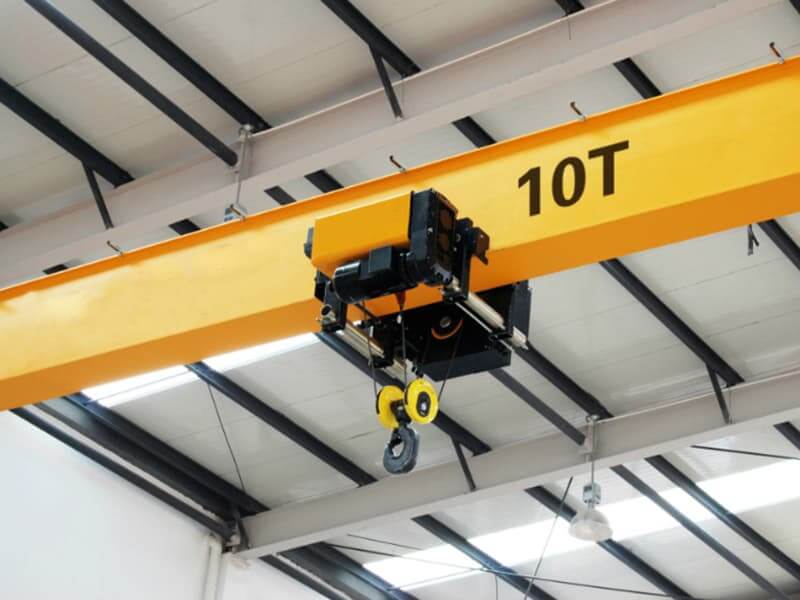Have you ever heard of an electric hoist? If you’re in the construction or mining business, you most certainly would know about this equipment. In simple terms, an electric hoist is defined as a piece of equipment used to move, lift or take down heavy objects. It’s powered by electricity. You’ll find them being used in vehicle repair workshops, warehouses, shipyards and various other places.
But what more is there to know about an electric hoist? Read on to discover seven interesting facts about this powerful and useful equipment.
1. Load Capacities
Depending on the type of electric hoist you’re using, they can operate within a wide range of load capacities. A lightweight electric hoist can have capacities ranging between 230kg to 250kg. Many hoists used for industrial purposes can handle load capacities from 40kg up to 2 tonnes.
The ability to handle a wide range of loads means you’ll easily find the right electric hoist for your work application.
2. Safety Features
Electric hoists are designed with safety features. Such features could include the following:
- Slip or friction clutch: This friction material prevents the hoist from lifting well over its weight load capacity. A slip clutch is normally set within a certain percentile so the hoist can still lift loads slightly over the weight rating capacity, without dangerous slips happening.
- Braking functions: Brakes on the hoist are used for holding and controlling loads. The holding brake ensures the load remains stable while suspended without putting any pressure on the motor. The controlled brake ensures there’s no pressure or overspeed on the motor when the load is being lowered.
- Shock load protection: This feature monitors the load and keeps the loading speed in check. Loading speed is automatically adjusted to allow for safe hoisting of the load into the air. This is vital for the safety of the team on the ground, the operator and the machinery being used to run the hoist.
- Emergency stop switch: Should the hoist end up overwinding rope or run into any other kind of problem, an emergency stop switch prevents further dangers or damage from happening.
3. Ergonomic Design for Improved Productivity
Nowadays, a lot of thought goes into the ergonomic design of electric and other types of hoists. This is in response to many companies wanting to ensure their staff are not dealing with heavy loads manually.
Companies were being faced with injury claims from workers manually operating heavy loads. Repetitive loading of heavy objects can lead to serious back problems as well as other parts of the body being used in lifting motions. To improve productivity as well as protect the health and safety of workers, companies are turning to electric hoists for this very reason.
4. The Crane Market is Growing
With the crane market on a constant upward growth trend, one can expect the hoist industry to also continue to grow. Valued at over $35 billion in 2016, the crane market is expected to be worth well over $44.7 billion in 2023. All construction equipment associated with crane operation would naturally also grow. The mining industry alone is expected to drive the hoist industry in the next few years.
5. Who Else is Using Electric Hoists?
Besides the construction and mining industry being big users of the electric hoist, you’ll find this equipment being used in other areas as well. These industries include:
- Aerospace and defence
- Marine, shipping and material handling in these areas
- Energy and power
- Automotive and railways
But while these industries are more typical users of electric hoists, you’ll also find the hoist being used in the following ways:
- The entertainment industry: For lifting backdrops, sets, lighting, sound equipment and more.
- Home maintenance: Companies carrying out home maintenance jobs will find a hoist useful. Try lowering and lifting massive chandeliers for cleaning and repairs without a hoist!
- Tree stump removal: An electric hoist is a quick and easy way to remove tree stumps from the ground without using extensive manual labour.
6. It is Cost Effective
Using electric hoists cuts down on the number of people you need to lift or move a heavy load. All you need is an operator and a person on the ground to help with loading and offloading. This saves on the costs of employing a whole team of workers to manually do the work an electric hoist can do.
It’s also worth pointing out the cost savings of improved productivity because you’re no longer dealing with injuries as a result of heavy lifting work. Plus, you’re saving time as well. Electric hoists are designed to lift heavy weights far quicker than a team of workers would be able to lift them.
Final Thoughts
Hoists have been around since the 1900s. But with the introduction of electric hoists, lifting heavy loads has become safer, easier and more convenient. It’s used worldwide and can be used for a variety of applications. The electric hoist will continue to be popular while improving productivity for many companies.




